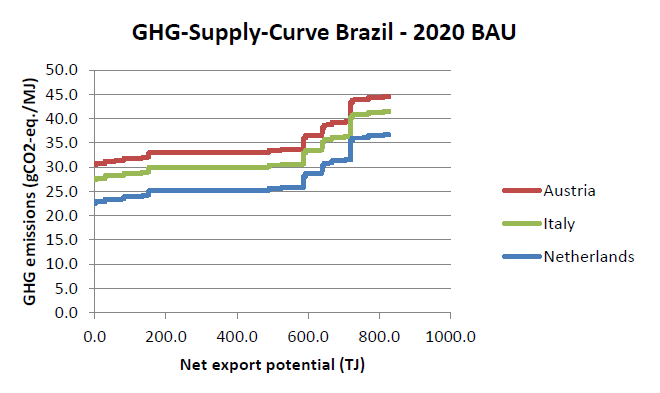One of the sustainability criteria important for residue use for pellet production is the total (direct) greenhouse gas emissions across the supply chain. Greenhouse gas emissions are calculated based on the same characteristics of the pellet production cost.
For the sea shipping CO2 emissions, the assumption is made that maritime transport takes place in large bulk vessels (14,201 tonnes), emitting 7 gCO2/tonne-km (Responsible Care, ECTA, & Cefic, 2011).
The distance between Brazil and the Netherlands is calculated by using Rio de Janeiro as start point and Rotterdam as end point, this results in a distance of 5243 nautical miles, or 9710 km. The additional GHG emissions of transport to Austria and Italy relative to the Netherlands are taken from the BIT-UU model results for the US, similar to the cost calculations.
The below figure shows the GHG supply Curve for Brazil in the 2020 BAU scenario. The GHG emissions do not differ between the different scenarios.

Aggregate greenhouse gas supply curves for the potentials from Brazil
